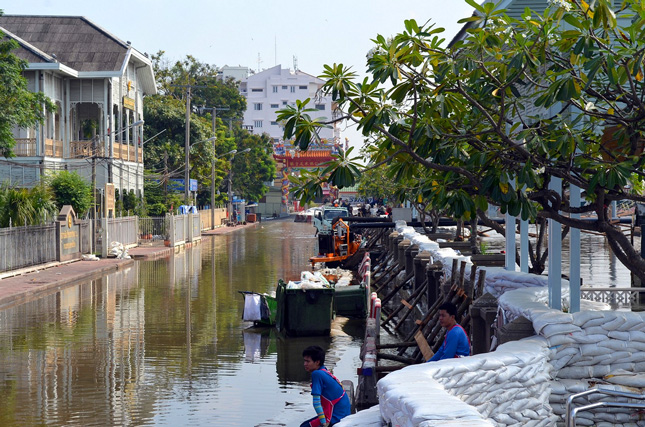-
Lukas Rüttinger, Adelphi
Thailand and Sri Lanka Show How Disasters Can be Catalysts of Fragility or Opportunities for Peace
June 26, 2015 By Wilson Center Staff
In 2011 Thailand was hit by unprecedented monsoon rains far above the average rainfall of the previous 30 years. Two million people across 26 provinces were affected. During the crisis, hundreds of civilians took it to the streets to protest discrimination by the Flood Response Operation Center and the unfair distribution of water, electricity supply, shelter, and food. Civilians were so angry that they broke a sandbag wall in Bangkok which was protecting a wealthy district from water surges. Public unrest and discontent with the government continued until a military coup in 2013.
This example shows how climate change in the form of extreme weather events can overwhelm states and societies, subsequently increasing fragility and political instability. As the impacts of climate change increase in the years to come, so will the number and intensity of extreme weather events. Many regions around the world are expected to be hit harder and more frequently. This lends new urgency to the question of what we can learn from past disasters if we are to avoid the crisis of tomorrow.
The protests in Thailand were not simply caused by an unprecedented disaster. The floods occurred when Thailand’s political landscape was already fragile. Violent anti-government protests had been a common occurrence since 2008. In 2011, a new government came into power which had to prove that it could redress class discrimination and deeply rooted citizen resentment: in this regard, it failed. How a government reacts to a disaster and how that reaction is perceived are key in understanding the link between disaster and fragility.
Continue reading on Resilience Compass.
Photo Credit: Flooding in Bangkok, October 2011, courtesy of flickr user Philip Roeland.
 A Publication of the Stimson Center.
A Publication of the Stimson Center.






